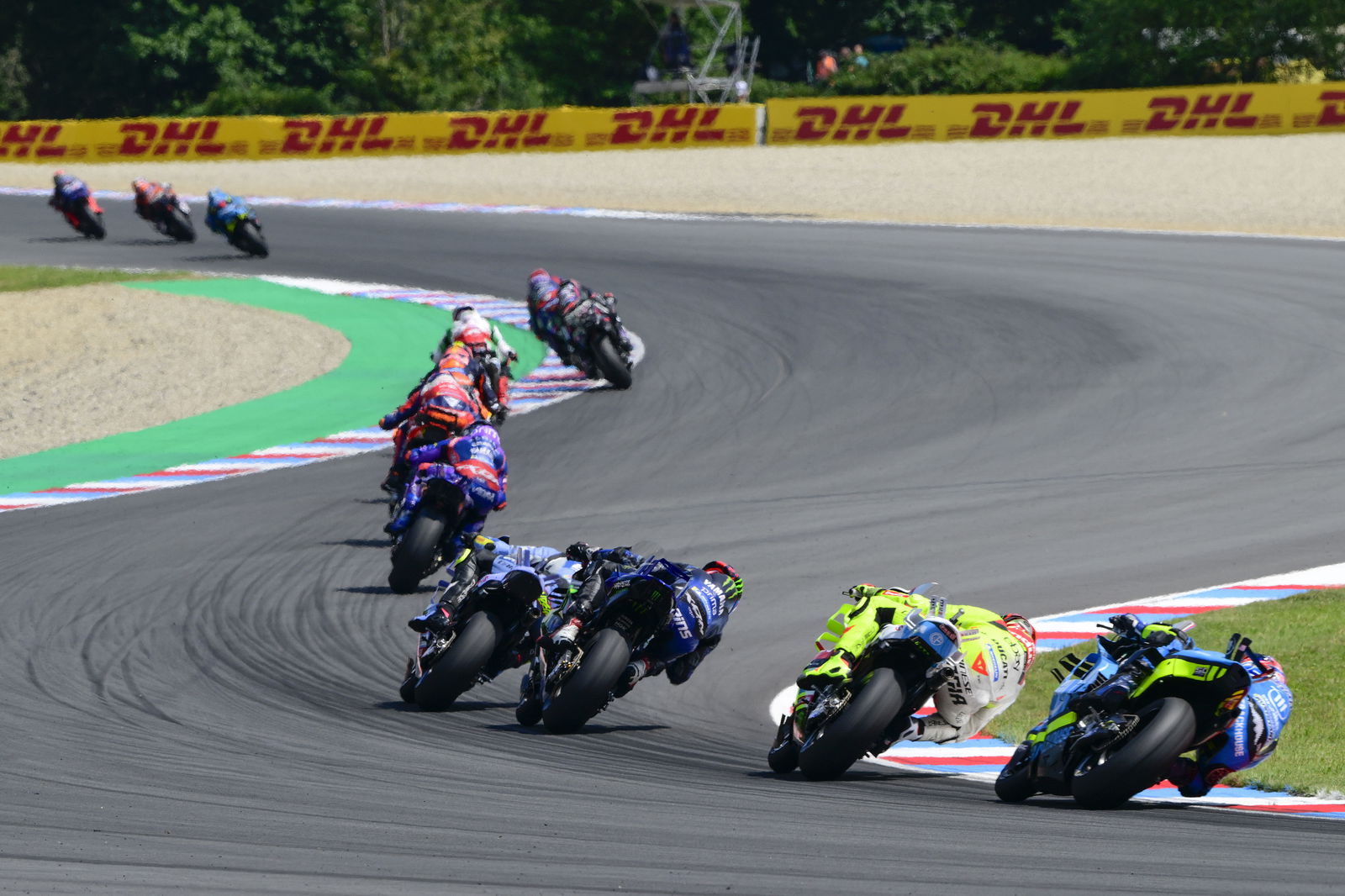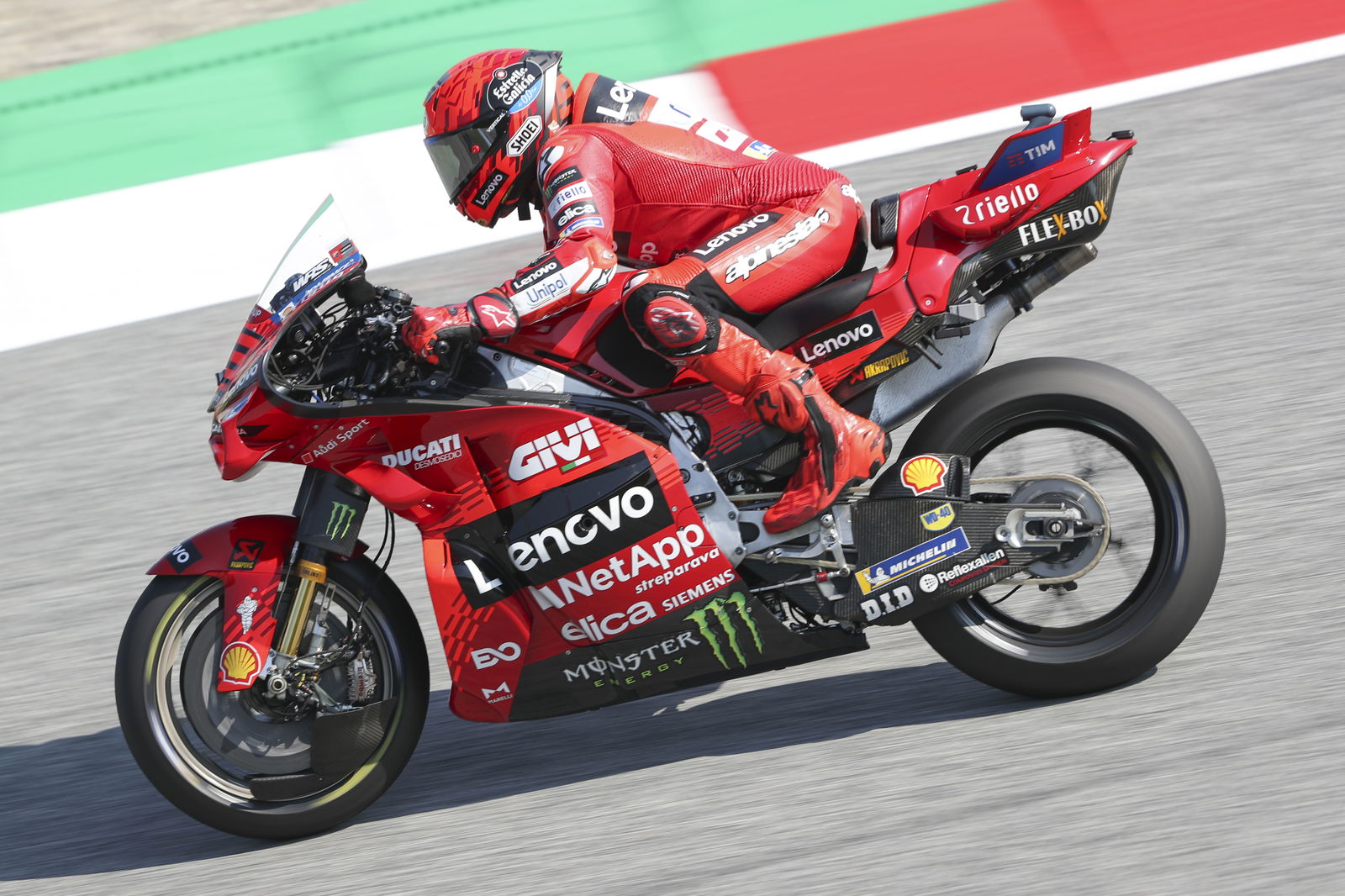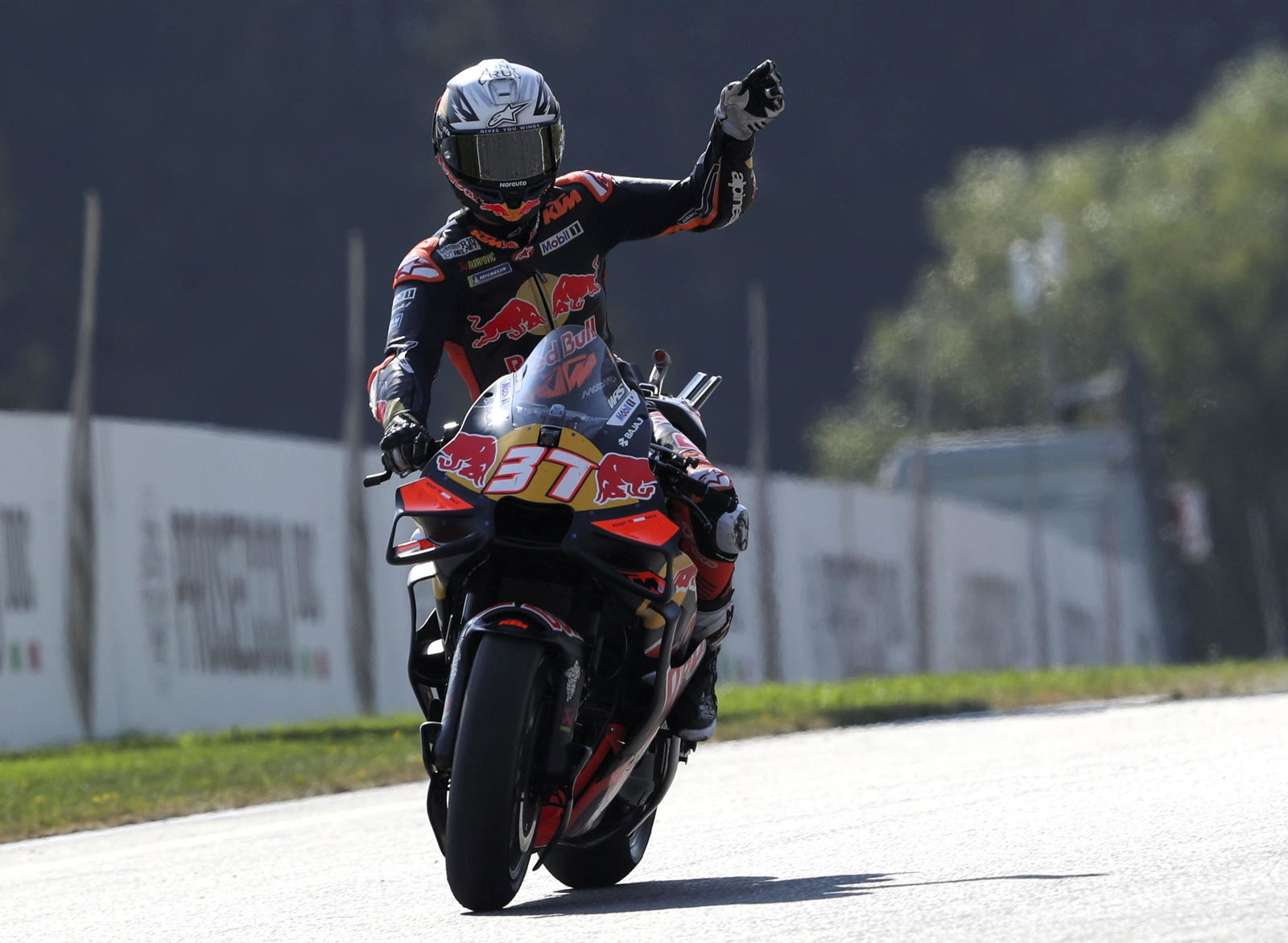MotoGP tech boss hits back at criticism of stability control
MotoGP technology director says the series does not have a “rider ability equalisation” problem.

Criticism of the new stability control system that has been introduced for this weekend’s Austrian MotoGP has been countered by the series’ technology boss.
Stability control began being tested for MotoGP over the winter in the February Sepang test as a potential new update for the championship’s unified software. In the Aragon post-race test, it was tried again, before being introduced on a race weekend for the first time at this weekend’s (15–17 August) 2025 Austrian Grand Prix.
Its inclusion as a part of MotoGP’s standardised electronics offering, produced by Marelli, has been touted as a safety evolution for the championship, but in the pre-event press conference on Thursday all three riders – Marco Bezzecchi, Marc Marquez, and Pedro Acosta – said that the addition of a new electronic control would reduce the impact on performance that could be had by a rider.

MotoGP’s Director of Technology Corrado Cecchinelli, though, thinks differently, saying that “rider ability equalisation” is not a problem faced by the championship.
“I would not argue because it’s an opinion and it’s their right to have one,” said Cecchinelli, when speaking to the international TV feed during FP1 in Austria.
“I can only say that, for us, the issue of safety is always there and we always feel the obligation to do anything we can for safety, whereas other issues come second.
“Among these other issues [is] maybe masking the value of the rider.
“Honestly, do we have a problem of rider ability equalisation? I don’t think so, unfortunately. Let me say unfortunately.”
How does stability control work?
As for the system itself, Cecchinelli explained that it makes the same action as traction control but based on a different measurement: where traction control reacts to wheelspin, stability control reacts to slide angle.
“We call it stability control because it’s a system that actually reacts to when the rear tyre snaps out of a corner,” he said.
“It’s a partial stability because it’s active only by reducing engine torque in acceleration, so it’s not active under braking.”
He added: “The final action is the same [between stability and traction control] because it’s reducing engine torque. But the input is different.
“Traction control reacts to the rear tyre spinning too much by comparing it to the front tyre.
“Stability, or ‘slide control’ if you want, reacts to the yaw rate, which is a complicated term to say how quickly the rear snaps out of a corner.
“It’s important to say that this may happen with very low or [no spin at all], so they react to different phenomena.”
The Italian also said that the system had been under consideration for a while, and that Francesco Bagnaia’s crash in the second corner of the 2023 Catalan Grand Prix was a notable incident that convinced MotoGP to pursue stability control.
“This is a safety system that we are considering since a long time [ago],” he said.
“We have had some accidents [over] time that convinced us to push harder in this direction and finally introduce it.
“The most evident crash was the one with Pecco [Francesco Bagnaia] in 2023 at the start in Catalunya, but it’s not just on that that we moved.
“It’s a system that manufacturers have, [for] months now, had the opportunity to test. We built it together and we decided together that this was the time, in absence of any objection, to introduce it, and this is it.”
Asked whether a system introduced specifically to combat high-side crashes was an unnecessary reduction in risk, Cecchinelli said that MotoGP does not need to worry about the amount of emotion in the sport.
“The risk is part of our sport and a part of its fascination, but we feel the obligation to make it happen in the safest way possible,” he said.
“I don’t think anybody should be afraid of not having enough pathos [emotion] in our sport, anyway.
“But you could ask someone who had a high-side if it’s beneficial or not, and I think they would be happy to have it.”


